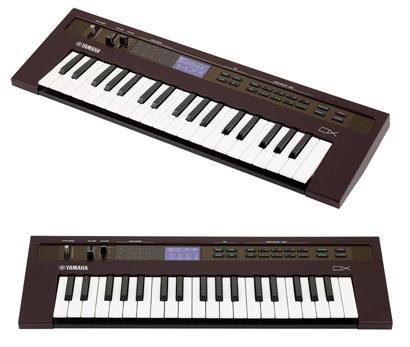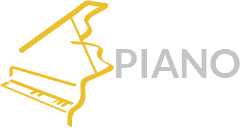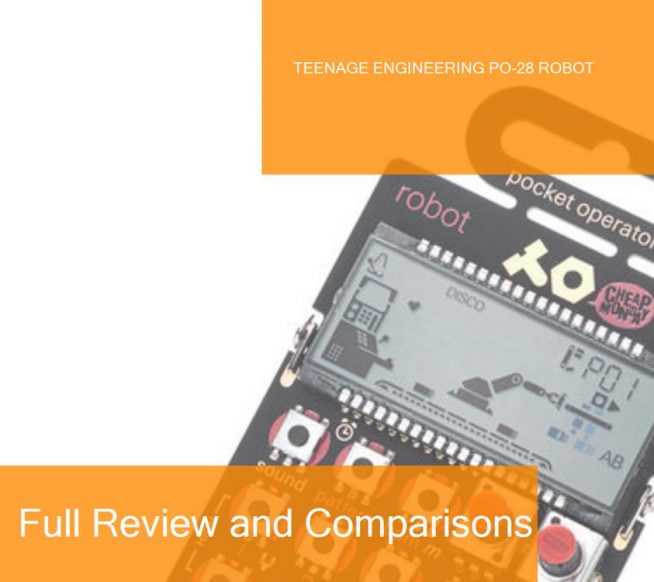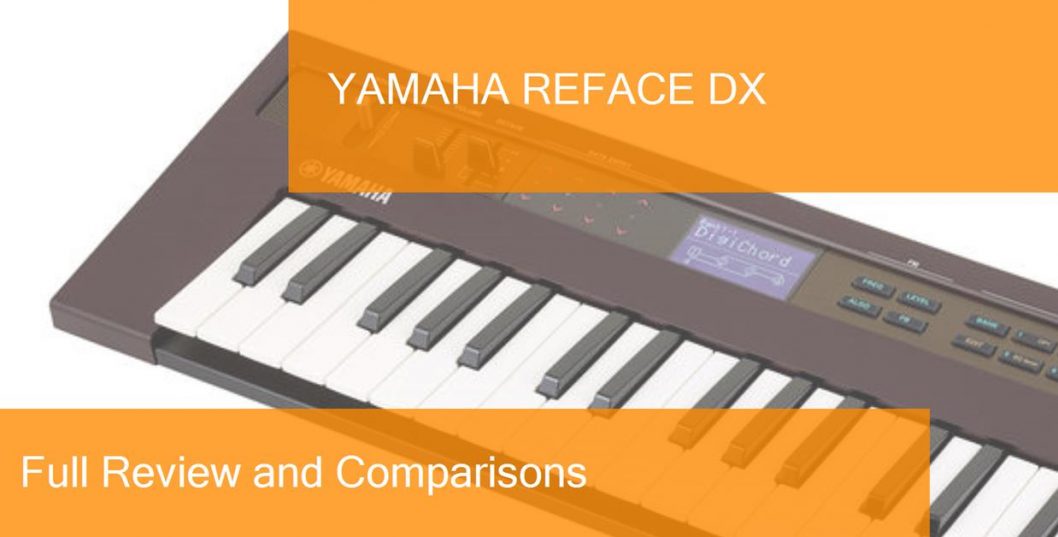- Home
- Author's Archive:
Review Synthesizers Teenage Engineering PO-28 robot. Where to buy it?
I’ll tell you how this post is built. First I list the features of the Teenage Engineering PO-28 robot synthesizer. Then you have a video or two, purchase links and useful comments from other users and then you have one of the most useful parts; comparison tables with similar keyboards so you can compare.
- With parameter lock
- Glide control and punch-in effects
- Real 8-bit synthesiser engines for live melodies and leads
- 15 Sounds (Different sounds of piano and other instruments) + Micro Drum
- Live-Play + sequencer combo
- 128 Pattern Chaining
- Step multiplier
- 16 Patterns
- 16 Pattern chains
- 16 international effects
- Parameters Lock: 2 Parameters per sound
- Line in and output 3.5 mm jack
- Power supply via 2 standard AAA batteries
- LC-Display
- Integrated speaker
- Integrated alarm
- Sync

This keyboard usually has a price around 56.00 €
Now that we’ve seen the features of this synthesizer Teenage Engineering PO-28 robot watch these related videos to learn more.
Post you may be interested in
- Ranking with the best synthesizers
- My selection of cheap synthesizers.
- Synthesizers Basic Guide.
- TEENAGE Synthesizers
Teenage Engineering PO-28 robot vs Korg Monotron Delay
The synthesizer Teenage Engineering PO-28 robot is usually 7 € more expensive than Korg Monotron Delay, but the difference is so small that this can vary..
|
Teenage Engineering PO-28 robot |
Korg Monotron Delay |
|---|---|
|
|
And then a video of the synthesizerKorg Monotron Delay
If you want to know more about this option, click on the following link to see the Korg Monotron Delay review
Teenage Engineering PO-28 robot vs Korg Volca FM
The synthesizer Teenage Engineering PO-28 robotis usually 72 € cheaper than Korg Volca FM.
|
Teenage Engineering PO-28 robot |
Korg Volca FM |
|---|---|
|
|
And then a video of the synthesizerKorg Volca FM
If you want to know more about this option, click on the following link to see the Korg Volca FM review
Teenage Engineering PO-28 robot vs Korg Volca Bass
The synthesizer Teenage Engineering PO-28 robotis usually 79 € cheaper than Korg Volca Bass.
|
Teenage Engineering PO-28 robot |
Korg Volca Bass |
|---|---|
|
|
And then a video of the synthesizerKorg Volca Bass
If you want to know more about this option, click on the following link to see the Korg Volca Bass review
Teenage Engineering PO-28 robot vs Korg Volca Keys
The synthesizer Teenage Engineering PO-28 robotis usually 73 € cheaper than Korg Volca Keys.
|
Teenage Engineering PO-28 robot |
Korg Volca Keys |
|---|---|
|
|
And then a video of the synthesizerKorg Volca Keys
If you want to know more about this option, click on the following link to see the Korg Volca Keys review
Where to buy the synthesizer Teenage Engineering PO-28 robot
Amazon
- Free Shipping and possibility of shipping in one day with Amazon Premium.
- Full Guarantee but they are no experts in music equipment.
- Sometimes better price.
- He’s got worse stock than Thomann.
Thomann
- Free Shipping.
- Full warranty. If you have any problems, they take care of everything.
- 100% reliable payment.
- Leader in trouble-free shipping.
- Usually Best price.
- Best Reputation: They are the leading online store in Europe and have the best catalogue and information.
Also look at these models with a similar price and features:
- SOMA Ether V2
- Behringer MS-1-BK
- Behringer MS-1-BL
- Behringer MS-1-RD
- Arturia MicroFreak
- Akai MPK miniplay
- Korg Volca Keys
- Korg Volca FM
- Korg Volca Modular
- Teenage Engineering PO-12 rhythm
- Korg Monologue Silver
- Korg Volca Bass
- Korg Monologue BK
- Korg Volca Nubass
- Moog Theremini
- IK Multimedia UNO Synth
- Teenage Engineering PO-16 factory
- Teenage Engineering PO-20 arcade
- Yamaha Reface DX
- Teenage Engineering PO-28 robot
- Korg Monologue Blue
- Korg Volca Kick
- Arturia MicroBrute
- Teenage Engineering PO-14 sub
- Widara Distant Voices Theremin
- Teenage Engineering Ultimate Cocktail PO Superset
- Teenage Engineering Ultimate Punch PO Superset
- Arturia MicroBrute Creation Edition
- Korg Monotron Duo
- Teenage Engineering PO-24 office
- Korg Monotron Delay
- Korg NTS-1
Review Synthesizers Clavia Nord Lead A1. Where to buy it?
I’ll tell you how this post is built. First I list the features of the Clavia Nord Lead A1 synthesizer. Then you have a video or two, purchase links and useful comments from other users and then you have one of the most useful parts; comparison tables with similar keyboards so you can compare.
- Velocity-sensitive keys with octave change +/- 2 octaves
- Synth engine with 96 kHz and 32 bit floating point processing
- 24-Voice polyphony (Number of notes that can sound at once. This includes songs that sound at once. So if you play over an accompaniment sound, more notes will accumulate.)
- 4-Part multi-tembral
- Keyboard Split (Split the keyboard into two different instruments) with 2 slots for top of the and lower section
- Modulation wheel
- Pitch Stick with programmable range of +/- 4 octaves
- Oscillators: Pitch, detune, form, sync, on, noise, sub mix, fm, traditional analogue and digital waveforms
- Unison
- Modulation: LFO with 5 waveforms mod envelope, LFO as one more Mod Envelope
- Filter: 12 x 24 dB low-pass filter, high-pass and band-pass filter
- Transistor and diode “ladder” filter simulation
- Effects: Ensemble, chorus (Effect of touching in places similar to a church or cathedral), Phaser, Flanger, ring modulator and Drive
- Performance: Master Clock Sync the arpeggiator
- LFO and Delay
- Velocity and Modulation Morph
- USB midi (MIDI allows you to do such wonderful things as connect the keyboard to the computer, record a soundtrack and with certain programs pass with a click what you have played to musical notes in a score. MIDI tracks store information from musical notes)
- Extra Features: Mutator
- Like switch
- “Extra fat” unison mode
- 1 pedal (The most important pedal of a piano or keyboard is the sustain pedal and is used to keep the note playing even if you stop pressing the key.) input for sustain
- 1 Pedal input for expression
- 4 x 6.3 mm Jack outputs
- 1 x 6.3 mm Jack headphone output
- MIDI input and output
- USB port
- Dimensions (W x H x D): 802 x 92 x 260 mm
- Weight: 4.85 kg

This keyboard usually has a price around 1390.00 €
Now that we’ve seen the features of this synthesizer Clavia Nord Lead A1 watch these related videos to learn more.
Post you may be interested in
- Ranking with the best synthesizers
- My selection of cheap synthesizers.
- Synthesizers Basic Guide.
- CLAVIA Synthesizers
Some comments from people who come to the forum about this model:
Comment:
The customers handbook is well crafted and will be downloaded online.
I discovered this become helpful whilst testing the synth as you really don’t need to tear open the sealed plastic bag containing the manual that comes with the keyboard in case of it being forced to be returned.
It is a fantastic instrument with the capacity of a myriad of Tomita design soundscapes, ghostly voices (Soprano Singer included!) with huge basses and leads.
the standard of sound is wonderful with magnificent sleighbell tones sounding like they’re covered in ice.
Each synth bank can be transposed up or down, split, played solamente or in unison creating pads and leads of massive proportions.
There are countless sound changing opportunities and there were no polyphony issues.
the consequences (as many as needed) are definitely superb. Particularly impressive will be the reverbs which can produce distance that is enormous make them excellent for movie music ratings and ambient soundscapes.
Unlike other synths I have recently tried, there were no insects, problems or other dilemmas whatsoever aided by the Nord Lead A1.
It ended up being perfect.
Just change it on and begin to create.
Thank you a great deal NORD because of this beautifully made lightweight though stone solid professional instrument.
A truly inspirational synth!
And to Musikhaus Thomann for his or her caring and constantly helpful solution..vielen Dank!
Comment:
If you’re a huge fan of 80’s then this is actually the synth you must have. I guess this is the good reason why I love it so much. I want to make game and movie soundtrack covers, especially Sci-fi and horror, plus it provides me personally just what I need. Along with it, it sounds like it does a lot more in the event that you read this you know what it is with the capacity of, but I assure you, once you actually begin to work. If you’re good at programming noises, you possibly can make it appear near to Yamaha CS 80.
many thanks with this wonderful item!
Clavia Nord Lead A1 vs MFB Dominion 1
The synthesizer Clavia Nord Lead A1 is usually 40 € more expensive than MFB Dominion 1, but the difference is so small that this can vary..
|
Clavia Nord Lead A1 |
MFB Dominion 1 |
|---|---|
|
|
And then a video of the synthesizerMFB Dominion 1
If you want to know more about this option, click on the following link to see the MFB Dominion 1 review
Clavia Nord Lead A1 vs Dave Smith Instruments Prophet REV2-8
The synthesizer Clavia Nord Lead A1is usually 50 € cheaper than Dave Smith Instruments Prophet REV2-8.
|
Clavia Nord Lead A1 |
Dave Smith Instruments Prophet REV2-8 |
|---|---|
|
|
And then a video of the synthesizerDave Smith Instruments Prophet REV2-8
If you want to know more about this option, click on the following link to see the Dave Smith Instruments Prophet REV2-8 review
Clavia Nord Lead A1 vs Moog Subsequent 37
The synthesizer Clavia Nord Lead A1 is usually 10 € more expensive than Moog Subsequent 37, but the difference is so small that this can vary..
|
Clavia Nord Lead A1 |
Moog Subsequent 37 |
|---|---|
|
Connections:
|
And then a video of the synthesizerMoog Subsequent 37
If you want to know more about this option, click on the following link to see the Moog Subsequent 37 review
Clavia Nord Lead A1 vs Teenage Engineering OP-1
The synthesizer Clavia Nord Lead A1 is usually 70 € more expensive than Teenage Engineering OP-1.
|
Clavia Nord Lead A1 |
Teenage Engineering OP-1 |
|---|---|
|
|
And then a video of the synthesizerTeenage Engineering OP-1
If you want to know more about this option, click on the following link to see the Teenage Engineering OP-1 review
Where to buy the synthesizer Clavia Nord Lead A1
Amazon
- Free Shipping and possibility of shipping in one day with Amazon Premium.
- Full Guarantee but they are no experts in music equipment.
- Sometimes better price.
- He’s got worse stock than Thomann.
Thomann
- Free Shipping.
- Full warranty. If you have any problems, they take care of everything.
- 100% reliable payment.
- Leader in trouble-free shipping.
- Usually Best price.
- Best Reputation: They are the leading online store in Europe and have the best catalogue and information.
Also look at these models with a similar price and features:
- Roland Jupiter-Xm
- Roland Fantom 6
- Moog Matriarch
- Dave Smith Instruments Prophet REV2-16
- Dave Smith Instruments Prophet REV2-8
- Waldorf Quantum
- Roland Fantom 8
- Yamaha Montage 7 White
- Roland Fantom 7
- Moog One – 16
- Korg Prologue 16
- Moog One – 8
- Yamaha MODX7
- Novation Summit
- Sequential Prophet 6
- Korg Prologue 8
- Clavia Nord Lead 4
- Yamaha MODX6
- Yamaha MOXF 8
- Teenage Engineering OP-1
- Sequential Prophet X
- Roland System-8
- Yamaha MODX8
- Dave Smith Instruments OB-6
- Moog Subsequent 37
- Yamaha Montage 8
- Manikin-Electronic Memotron M2K
- Access Virus Ti2 Keyboard
- Clavia Nord Lead A1
- Elektron Digitone Keys
- Yamaha Montage 8 White
- Access Virus Ti2 Darkstar
- ARP Odyssey FS Rev.3 ARP SQ1
- Vermona ’14 Analog Synthesizer
- MFB Dominion 1
- Yamaha Montage 6
- Arturia MatrixBrute
- Yamaha Montage 6 White
- ASM Hydrasynth Keyboard
- UDO Audio Super 6 Black
- ARP Odyssey FS Rev.2 ARP SQ1
- UDO Audio Super 6 Blue
- Yamaha Montage 7
- Roland JD-XA
- Korg Kronos 61
- Roland FA-08
- Roland FA-07
- Korg Kronos 88
- Korg Krome EX 88
- Kurzweil PC4
- Korg Kronos 73
- Roland FA-06B Black Edition
- Korg Krome EX 73
- Korg Kronos LS
Review Synthesizers Yamaha Reface DX. Where to buy it?
I’ll tell you how this post is built. First I list the features of the Yamaha Reface DX synthesizer. Then you have a video or two, purchase links and useful comments from other users and then you have one of the most useful parts; comparison tables with similar keyboards so you can compare.
- With FM Sound motor (regularity modulation)
- 37 HQ Mini-action keys
- 8 Voice polyphony (Number of notes that can sound at once. This includes songs that sound at once. So if you play over an accompaniment sound, more notes will accumulate.) – switchable to monophonic mode
- 4 Operator with feedback
- 12 Algorithms
- 32 Voice memory locations
- 7 Effects (2 can be utilized in parallel)
- Phrase Looper
- LCD Display
- Touch slider/-switch
- 2 Line outputs: 6.3 mm Jack, unbalanced
- AUX input: 3.5 mm Mini jack stereo
- Headphone production: 3.5 mm Mini jack stereo
- USB
- Foot pedal (The most important pedal of a piano or keyboard is the sustain pedal and is used to keep the note playing even if you stop pressing the key.) input
- midi (MIDI allows you to do such wonderful things as connect the keyboard to the computer, record a soundtrack and with certain programs pass with a click what you have played to musical notes in a score. MIDI tracks store information from musical notes) in/out (mini-DIN)
- Power supply connector
- 2 Integrated louDSP (Digital Signal Processing (DSP) effects. These are digital effects that modify the sound of the keyboard.)eakers
- Dimensions (W x H x D): 530 x 60 x 175 mm
- body weight: 1.9 kg
- Incl. power supply, MIDI breakout cable and individual manual
- Powered by batteries (perhaps not included)

This keyboard usually has a price around 298.00 €
Now that we’ve seen the features of this synthesizer Yamaha Reface DX watch these related videos to learn more.
Post you may be interested in
- Ranking with the best synthesizers
- My selection of cheap synthesizers.
- Synthesizers Basic Guide.
- YAMAHA Synthesizers
Some comments from people who come to the forum about this model:
Comment:
I can gladly report that I am extremely content with the purchase. Yamaha just cut out the total amount that is rightfor me), the size, the extra weight, the mechanical durabilty plus the feel for the tips and settings are just right – sufficient for serious playing. Perhaps the mini keys may be well enjoyed a hand that is big though it’s a bit tougher with both of your hands. It boasts some very sound that is severe while nothing is overdone as well as the tool remains really portable. The built-in speakers don’t distort, but aren’t very noisy and cannot handle reduced registers – so headphones or amplification is recommended for the joy.
The individual interface is interestingly good and easy to utilize, the touch settings exceeded my objectives. The connectors are expert in size and variety, even the headphones jack may be the variation that is 6.3mm. There isn’t any sound – it might even be properly used for phase purposes, save for the limited quantity and size of this tips (but, having MIDI, the DX sounds can be played on normal keys too).
I have not tried the accompanying iPhone app yet (I need to order a cable), but this is actually the only tool for the 4 Refaces that can store noises itself too.
It also offers a usable looper that will keep thirty minutes of music (limited by the 8-note maximum poliphony!), however the recorded loops can’t be stored following the instrument is switched off, plus the sound can not be changed for the next layer of recording. Or, it can be changed, however the noise of all layers are changing at once.
I think however that as of this price the keyboard delivers enough, even surpassing my objectives. I really enjoy bringing it every where with a good headphones, operating on 6 AA batteries.
Before buying, I hesitated which Reface I should select and bought the DX for a few reasons:
– it’s an FM synthesizer I never ever had and is enjoyable to learn (I currently had a piano and a Hammond organ)
– but it addittionally has (pre-stored) electric piano noise and 8 records poliphony, which I prefer when studying music theory
– it has a looper
– it has 4×8 internal storage places for storing sounds (the only person associated with the 4 Refaces)
(however, you can keep sounds within the iPhone/iPad apps)
Considering that it absolutely was a blind purchase, I’d never ever attempted the instrument before, I am quite delighted I did purchase it and can effortlessly recommend it for your requirements.
Comment:
I think it is to be a continuing inspiration and recommend it to anybody, not only keyboard players. There clearly was a good reason it does not be accessible from time-to-time. Find out.
Yamaha Reface DX vs Novation Bass Station II
The synthesizer Yamaha Reface DXis usually 77 € cheaper than Novation Bass Station II.
|
Yamaha Reface DX |
Novation Bass Station II |
|---|---|
|
|
And then a video of the synthesizerNovation Bass Station II
If you want to know more about this option, click on the following link to see the Novation Bass Station II review
Yamaha Reface DX vs Arturia MicroBrute
The synthesizer Yamaha Reface DX is usually 19 € more expensive than Arturia MicroBrute, but the difference is so small that this can vary..
|
Yamaha Reface DX |
Arturia MicroBrute |
|---|---|
|
|
And then a video of the synthesizerArturia MicroBrute
If you want to know more about this option, click on the following link to see the Arturia MicroBrute review
Yamaha Reface DX vs Korg microKORG
The synthesizer Yamaha Reface DXis usually 31 € cheaper than Korg microKORG, but the difference is so small that this can vary..
|
Yamaha Reface DX |
Korg microKORG |
|---|---|
|
|
And then a video of the synthesizerKorg microKORG
If you want to know more about this option, click on the following link to see the Korg microKORG review
Yamaha Reface DX vs Novation MiniNova
The synthesizer Yamaha Reface DXis usually 24 € cheaper than Novation MiniNova, but the difference is so small that this can vary..
|
Yamaha Reface DX |
Novation MiniNova |
|---|---|
|
|
And then a video of the synthesizerNovation MiniNova
If you want to know more about this option, click on the following link to see the Novation MiniNova review
Where to buy the synthesizer Yamaha Reface DX
Amazon
- Free Shipping and possibility of shipping in one day with Amazon Premium.
- Full Guarantee but they are no experts in music equipment.
- Sometimes better price.
- He’s got worse stock than Thomann.
Thomann
- Free Shipping.
- Full warranty. If you have any problems, they take care of everything.
- 100% reliable payment.
- Leader in trouble-free shipping.
- Usually Best price.
- Best Reputation: They are the leading online store in Europe and have the best catalogue and information.
Also look at these models with a similar price and features:
- SOMA Ether V2
- Behringer MS-1-BK
- Behringer MS-1-BL
- Behringer MS-1-RD
- Arturia MicroFreak
- Akai MPK miniplay
- Korg Volca Keys
- Korg Volca FM
- Korg Volca Modular
- Teenage Engineering PO-12 rhythm
- Korg Monologue Silver
- Korg Volca Bass
- Korg Monologue BK
- Korg Volca Nubass
- Moog Theremini
- IK Multimedia UNO Synth
- Teenage Engineering PO-16 factory
- Teenage Engineering PO-20 arcade
- Yamaha Reface DX
- Teenage Engineering PO-28 robot
- Korg Monologue Blue
- Korg Volca Kick
- Arturia MicroBrute
- Teenage Engineering PO-14 sub
- Widara Distant Voices Theremin
- Teenage Engineering Ultimate Cocktail PO Superset
- Teenage Engineering Ultimate Punch PO Superset
- Arturia MicroBrute Creation Edition
- Korg Monotron Duo
- Teenage Engineering PO-24 office
- Korg Monotron Delay
- Korg NTS-1



